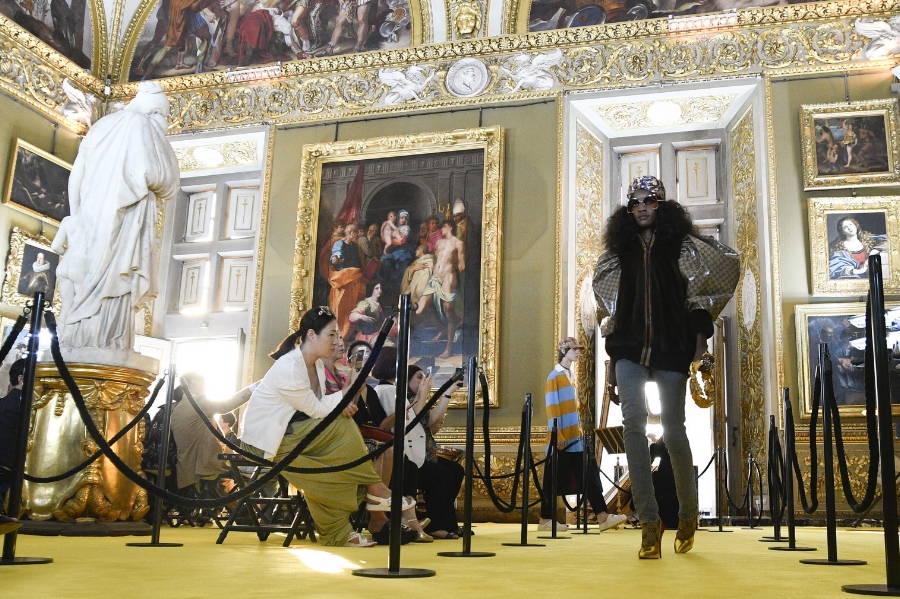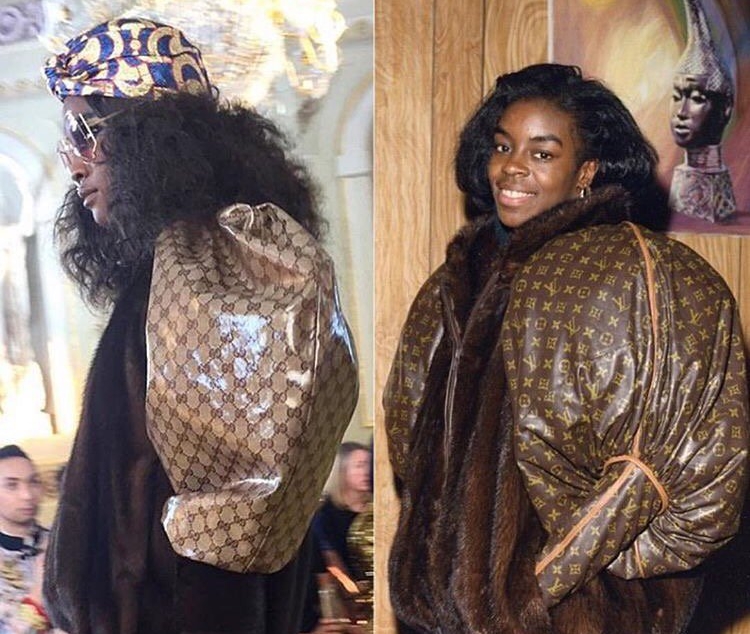 image: AP
image: AP
In recent years, Balmain, Isabel Marant, Jeremy Scott, Vetements, Off-White, and Chanel, among other high fashion brands, have all drawn applause for their collections, only to be called out after the fact for copying. As of its 2018 Cruise show, which was staged in Florence on Monday, Gucci also joined this list.
To get you up to speed quickly: Two years ago, Chanel was accused of copying the Fair Isle designs of Scotland-based knitwear designer Mati Ventrillon. (This came a few years after Chanel seemingly copied emerging designer Pamela Love). Isabel Marant, on the other hand, came under fire for misappropriating the traditional designs of a group of indigenous Mexican people.
Off-White has a well-known penchant for copying Raf Simons, while Vetements loves to take “inspiration” from Margiela. Balmain copied Alexander McQueen for Givenchy recently, and who could forget the lawsuits filed against Jeremy Scott for copyright infringement?
Right around the time that some of the aforementioned instances came to light, we took on the topic of high fashion copying and the effects that design piracy at the upper echelon of the fashion spectrum stands to have on a brand’s bottom line. While only a couple of the copying cases cited above gave rise to legal disputes, we posited that a lack of litigation may not have actually mattered in the grand scheme of things. This is because damage had already been done to the copycat brand – by way of an array of bad, bad press. This is a topic worth revisiting.
Negative press in fashion can be derived from an array of circumstances. In the past, it has arisen from the use of black face makeup on white models or Native American costumes in magazine editorials, the casting of “shockingly skinny” models, and/or controversial statements made by creatives (think: Dolce and Gabbana, John Galliano, etc.). Unfavorable treatment in the press can also come hand-in-hand with claims of copying.
It appears, however, that these passing instances of alleged copying might actually be little more than that – fleeting moments. While such copying call-outs are certainly more visible and well-documented than ever before, thanks to social media, they do not necessarily have a significant impact on a brand’s image or bottom line.
Widespread claims of copying and a handful of lawsuits have not deterred consumers from purchasing Jeremy Scott’s Moschino iPhone cases and/or wacky, colorful sweaters, for instance. (According to reports, Jeremy Scott has increased Moschino sales tenfold). The same can be said of Chanel, which has been unaffected by the numerous claims of copying that have been lodged against it. If there is a pattern here, it means that Gucci will likely be unscathed by Internet fury surrounding the jacket it showed on Monday as part of its Cruise 2018 collection that bears striking similarity to one that Dapper Dan created twenty years ago.
(Note: Per the New York Times, “A Gucci spokesman said that the brand has tried to contact Mr. Day, so far without success, and that [creative director Alessandro] Michele was interested in a collaboration with him that would celebrate the influence he had on fashion and hip-hop culture in the 1980s.” Dapper Dan and his son/brand manager, Jelani Day, declined to comment for the Times’ article).
 Gucci Cruise 2018 (left) and Dapper Dan’s jacket circa 1980 (right)
Gucci Cruise 2018 (left) and Dapper Dan’s jacket circa 1980 (right)
Maybe even more telling, however, are brands, such as Vetements, which have taken to largely building entire collections by co-opting the designs of others. No shortage of Vetements’ garments can be tied directly to ones that Martin Margiela – or shipping company DHL – showed years prior. Off-White’s Nebraska collection was little more than a copy-and-paste of something Raf Simons took on ten years ago, right down to Virgil Abloh’s own description of his motivation for the collection.
Yet, consumers do not appear to mind. In fact, most fashion fans are not seeking out novelty in design or shunning copycat wares – either because they do not know the difference (not many people are fashion history buffs and/or scouring the archives of Helmut Lang or Martin Margiela on a regular basis) or they simply do not care. Both options seem entirely plausible.
As we told you in connection with an earlier look at the hype surrounding the Vetements brand, fashion – at the moment – is less about the garments themselves and their intrinsic value (which may be measured by their design innovation, their materials, etc.) and more about how people can use these garments as status symbols (an age-old practice) or to display how “up on” fashion they really are.
What does this say about the state of the fashion industry at the moment? A number of things. One thing we can say with much certainty is that it does not really speak to the designs themselves in any real depth. It is not about the clothes (maybe it has never been). It is the spectacle; it is about that Instagram-able or Snap-able moment. It is not about design, which is how copying or “inspiration” has been able to seamlessly – and shamelessly – make its way to the foreground.
Just as the $330 Vetements DHL t-shirt is not the peak of innovation in terms of design, neither is the Dapper Dan-esque Gucci jacket, if for no other reason than it was already done over twenty years ago. But these brands arguably do not have to be inherently progressive in terms of design because that is just not where we – collectively – are right now. That is not where the focus is. An intense focus on design is not what sells clothes.
So, why would a brand, like Gucci, for instance, which can sell $600 knock-off inspired double “G” tees, truly innovate when that is not what consumers are asking for? And if consumers are not adverse to copies popping up on brands’ runways and then their e-commerce sites (and then in their e-carts and on their own backs) and brands’ bottom-lines are not suffering, then why should brands change their tune?










